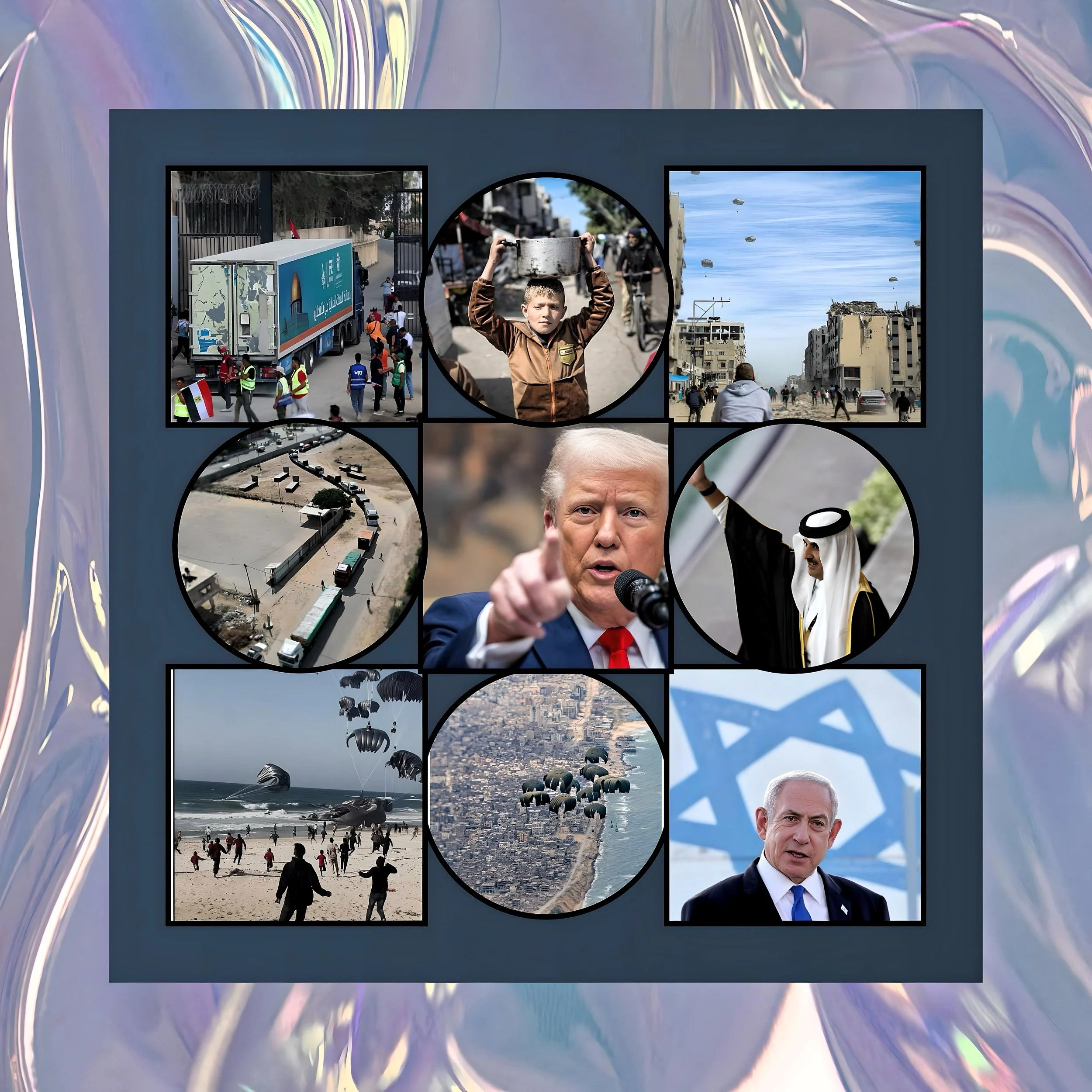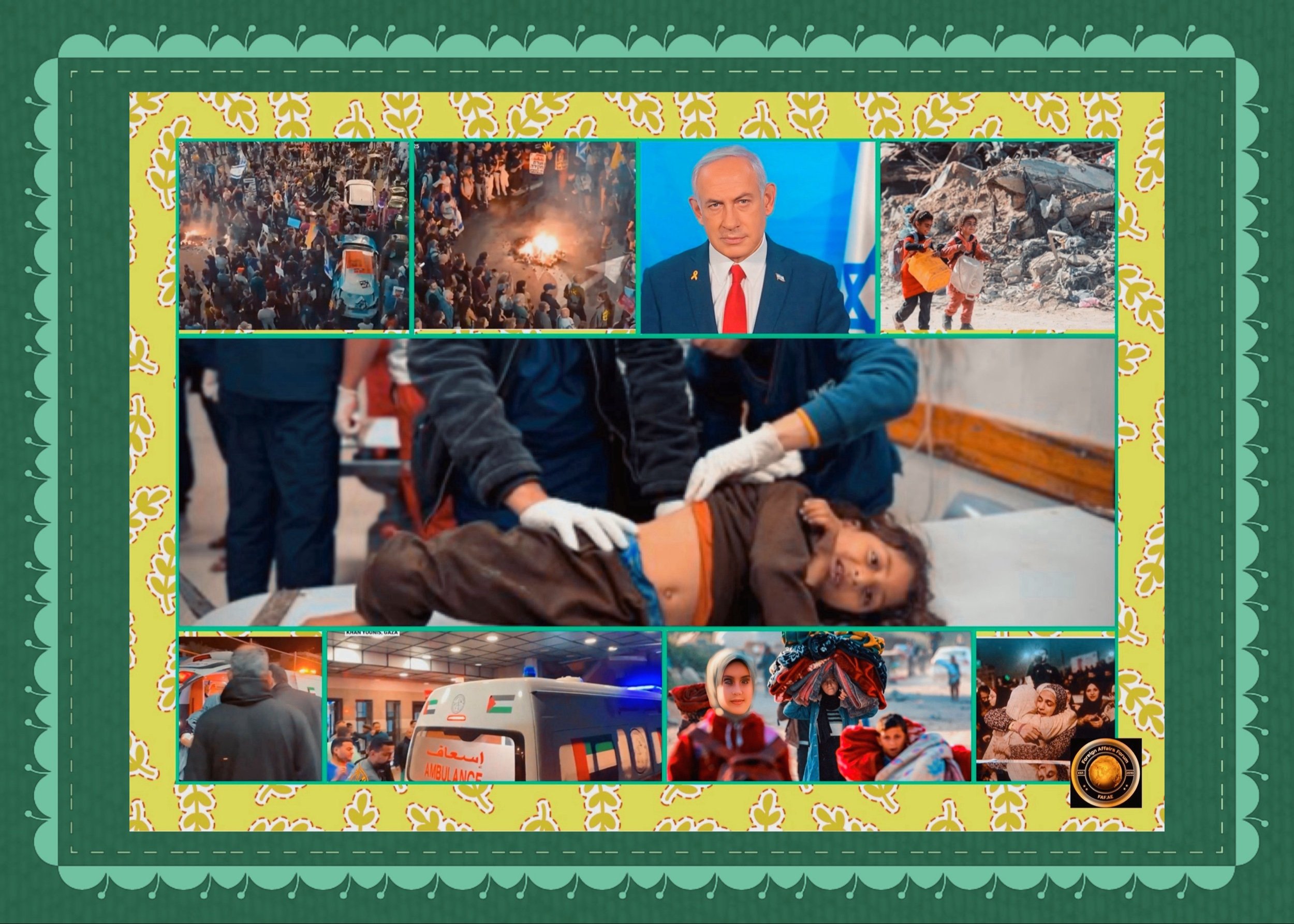US-Israel Strategic Dynamics in Gaza Negotiations: Coordinated Pressure or Diplomatic Theater?
Introduction
The complex interplay between the United States and Israel in managing the Gaza conflict has increasingly drawn comparisons to a “good cop, bad cop” strategy, particularly amid former President Donald Trump’s escalating rhetoric and Israeli Prime Minister Benjamin Netanyahu’s tentative steps toward phase two of the ceasefire agreement.
FAF reviews the evidence and patterns for such a coordinated approach, analyzing recent developments in hostage negotiations, ceasefire violations, and geopolitical posturing.
Trump’s Ultimatums as the “Bad Cop”
Donald Trump’s reemergence as a central figure in Gaza diplomacy has been marked by stark warnings to Hamas. On March 5, 2025, he issued a “final warning” on Truth Social, demanding the “immediate release of all hostages” and threatening “hell to pay” for noncompliance.
This mirrored his January 2025 threat, which preceded a temporary ceasefire but included a similar ultimatum: “Release the hostages now, or there will be hell to pay later!”.
Trump’s rhetoric frames the U.S. as an uncompromising force, emphasizing military resolve over diplomacy. His suggestion of a U.S. takeover of Gaza and calls for Hamas leaders to flee the territory further cement this confrontational posture.
Critically, Trump’s threats coincide with unprecedented direct U.S.-Hamas negotiations led by Special Envoy Adam Boehler, aimed at securing the release of American hostages.
While the White House framed these talks as a “good-faith effort,” Hamas condemned Trump’s language as inflammatory, accusing him of emboldening Israel to abandon ceasefire obligations.
Combining backchannel diplomacy with public brinkmanship, this duality aligns with historical U.S. tactics of pairing covert engagement with overt pressure.
Netanyahu’s Delays and Phase Two Ambiguity
Strategic delays and conditional engagement have characterized Israel’s approach under Netanyahu.
Despite the January 19 ceasefire agreement stipulating that phase two negotiations begin by February 4, Israel postponed discussions until March 3, citing Hamas’s “humiliating” hostage-release ceremonies as a pretext.
This 13-day delay allowed Netanyahu to placate domestic hardliners while maintaining a nominal commitment to the process.
Notably, Netanyahu’s government has simultaneously violated key ceasefire terms, including blocking humanitarian aid, conducting aerial surveillance, and restricting Palestinian fishing zones.
These actions, coupled with Netanyahu’s March 3 warning of “consequences beyond imagination” for Hamas, suggest a deliberate effort to undermine trust while projecting a veneer of cooperation.
Such tactics mirror the “bad cop” role, yet Israel’s eventual participation in Cairo talks on March 4 introduced ambiguity into its strategic posture.
The “Good Cop” Facade: Ceasefire Mechanics and Arab Mediation
The U.S. and Israel have occasionally adopted conciliatory tones to offset their adversarial rhetoric.
Secretary of State Marco Rubio’s February 16 meeting with Netanyahu emphasized a “common strategy” for Gaza’s future, ostensibly supporting Trump’s vision but avoiding explicit endorsement of forced displacement.
Similarly, Netanyahu’s vague praise for Egypt’s $53 billion reconstruction plan—while dismissing its call for Palestinian self-governance—allowed him to feign openness to Arab-led solutions.
Behind the scenes, the U.S. leveraged intelligence sharing and resource allocation to bolster Israel’s operations against Hezbollah and Iran, framing these efforts as part of a broader counterterrorism partnership.
This duality—publicly advocating for de-escalation while privately enabling military escalation—reflects a calculated division of roles, with the U.S. absorbing international criticism for hardline policies that Israel implements.
Historical Precedents and Strategic Coordination
The “good cop, bad cop” dynamic has roots in prior U.S.-Israeli collaborations.
During the 2008 assassination of Hezbollah commander Imad Mughniyeh, the CIA and Mossad jointly executed the operation, with the U.S. later distancing itself publicly to preserve diplomatic capital.
Similarly, Netanyahu has historically used U.S. pressure as political cover, as seen in his 2010 settlement freeze, which he blamed on Obama administration demands to pacify domestic critics.
In the current context, Trump’s threats serve multiple purposes
Negotiation Leverage
By setting rigid deadlines (e.g., the March 6 hostage ultimatum), Trump creates artificial urgency, pressuring Hamas to concede before Israel resumes military operations.
Domestic Posturing
Trump’s rhetoric appeals to his base by projecting strength, while Netanyahu uses it to justify delays to Israeli voters.
Geopolitical Signaling
The U.S. absorbs backlash for contentious policies (e.g., Gaza takeover proposals), allowing Israel to pursue incremental gains without complete diplomatic isolation.
Contradictions and Risks
The strategy’s fragility lies in its reliance on Hamas’s acquiescence. Hamas official Basem Naim has accused Israel of “dirty games,” citing aid blockades and stalled withdrawals as evidence of bad faith. Meanwhile, Arab mediators warn that Trump’s threats “complicate matters” by validating Hamas’s narrative of U.S.-Israeli collusion.
Furthermore, Netanyahu’s insistence on “finishing the job” against Iran—bolstered by Trump’s pledge of “full support”—diverts attention from Gaza, risking broader regional escalation. This overreach underscores the peril of conflating anti-Hamas operations with a broader anti-Iran agenda, potentially alienating Arab states crucial to postwar planning.
Conclusion
A High-Stakes Charade
The interplay between the U.S. and Israel reflects less a coherent strategy than an opportunistic alignment of political interests.
Trump’s bellicose rhetoric provides Netanyahu with diplomatic cover to prolong military pressure, while Israel’s nominal engagement in phase two talks offers the U.S. plausible deniability.
However, this approach risks collapsing under its dichotomies, as humanitarian crises in Gaza and Hamas’s entrenched resistance defy coercive diplomacy.
For lasting resolution, both nations must reconcile their performative roles with substantive concessions, including lifting aid blockades, committing to Palestinian governance, and engaging third-party mediators.
Until then, the “good cop, bad cop” routine remains a dangerous gambit, exacerbating regional instability while offering no path to enduring peace.






